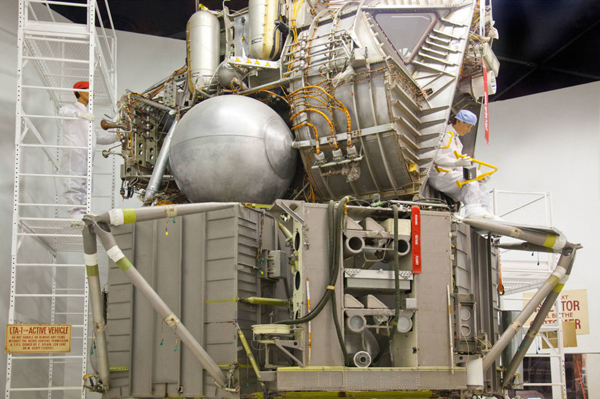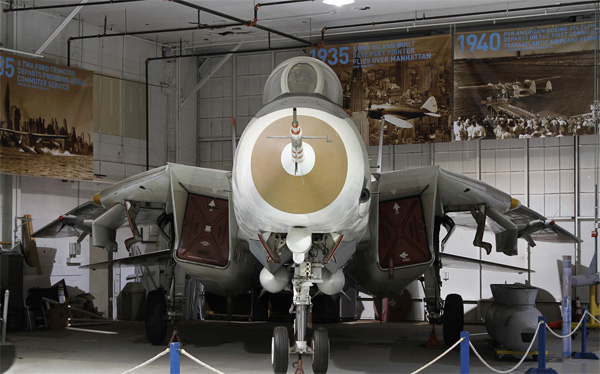New York’s links to the epic Apollo story
06/04/2016
Most of the area that surrounds the old Grumman Ironworks is industrial in one form or another. One big business park seems to blend into the next, each one full of low-rise warehouses and retail outlets. During the 60s, Grumman was the single biggest employer of locals and engineers, MIT graduates and even Navy pilots from all over the east coast could apply their skills here. So it goes without saying there’s still significant pride in Bethpage from those who know what was pioneered here. And to that end, just 25 minutes drive or so from the Grumman facility is the Cradle of Aviation Museum, or CAM. As the site says, “Dedicated to preserving Long Island’s rich aerospace heritage of discovery and to inspiring future generations through science and technology” and there’s a very good page that explains in more detail the association of Long Island and America’s aviation history.
Housed in a few hangars of what was once Mitchel Field, a busy Air Force Base, it’s located on Charles Lindbergh Blvd, Garden City. You more or less just follow the 107 (Hicksvillle Road) from the Grumman site, swing a right onto the 24 (Hempstead Turnpike) and you’re there in no time at all.

A museum mock-up showing a Lunar Module being built in a Grumman clean room
Being a total space nut, I’ve seen several air & space museums across America…and in all honesty, I think this one is the best yet. It might not be the biggest, I think that honour goes to Seattle, but they’ve crammed so much in. Full-size aircraft hang from the ceiling, left and right and one or two squeezed inbetween. There are stunning recreations of early aircraft workshops, a planetarium, interactive and educational displays and there’s even a little section where you can watch on monitors and listen in to New York air traffic control (Terminal Radar Approach Control or TRACON) in real time. If you’ve ever seen Pushing Tin, then you know the airspace over New York is the most crowded in the world, with over 7,000 passengers planes landing and leaving every day from three international airports, JFK, LaGuardia, and Newark, which are all within 20 miles of each other. An interesting note is that the New York TRACON is actually located between the old Grumman site and the museum.
Naturally, there’s a big Grumman presence at the CAM, and rightly so. Not only is there a TBM-3E Avenger, F6F-5 Hellcat and F4F-3 Wildcat, all beautifully restored and displayed in recreated scenes from their WWII history, but there are two complete F-14 Tomcats and a standalone cockpit positioned at floor level, so you can see just how little legroom Navy pilots had.

Arguably the most stylish fighter aircraft ever flown, the Grumman F-14 Tomcat
However, the highlight of my visit was the actual, built-but-unused LM13, originally designated for Apollo 18, which takes pride of place in the museum’s section marked ‘Space Exploration’. The first picture on this blog entry, on the previous page, shows that. Next door, there’s a mockup of a Lunar Module being built in a clean room that would have been in building 5 of the Grumman site.
There’s even a restored A-10 Thunderbolt on display and I’ve never seen one of those in a museum before.